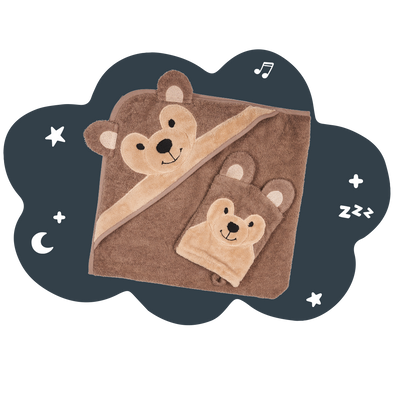Practical Tips for Baby Proofing
One of the most-asked questions expectant and new parents ask, right next to “Why is my baby crying so much?” and “Is green poop normal?,” is “Do I really need to babyproof my home?”
In the midst of the chaotic bliss that is childbirth and new parenting, baby proofing can quickly become a burden many parents wish to bypass.
Unfortunately, as infants grow to become crawlers and then toddlers, the risk of them getting hurt escalates quickly.
Without precautionary proofing measures in place, you may find your child involved in many avoidable accidents around the home.
In this article, you’ll find helpful tips for babyproofing your home without overdoing it. You’ll get detailed insight into how you can proof various rooms in your home to keep your child as safe as possible.
A Checklist for Baby Proofing Every Room
1. Make General Updates and Fixes in Your Home
Before you delve into proofing individual rooms, start by giving your home a good fix. If there’s anything not working well, or in need of repairs, now’s the right time to tackle it.
Here’s a list of things to check for:
- Leaking faucets, heaters. Heaters should preferably be within a range of 120oF/50oC to ensure the temperature is not too hot for the baby.
- Broken windows or unhinged doors. Install locks and secure catches on room and refrigerator doors, windows, and appliances to prevent your child from using them unsupervised.
- Faulty smoke and carbon monoxide detectors.
- Broken window sills, detached door frames.
- Old or unsafe furniture that could put your baby in harm’s way. Proofing with corner cushions can help protect your child from sharp-edged furniture sitting pretty in your house.
- Lead paint. Older homes built in the late 70s tend to have lead-painted surfaces around the home. Exposure to lead is dangerous for children when they start to crawl or touch these surfaces. For such repairs or renovations, it’s best to work with a lead-safe professional; don’t do it yourself.
- Malfunctioning electrical appliances and outlets around the home.
2. Baby Proof the Living Room
This room needs proofing because babies are susceptible to tripping, falling, and colliding with sharp-edged furniture usually found here.
To avoid this, cover up edges that can cause injuries with corner cushions or corner cards. You can also consider replacing “dangerous” furniture with baby-safe options. Getting softer and rounder furniture is a good idea at this time.
Also, cover up any old or faulty sockets, and unprotected unused electrical outlets. Outlet plugs are a good way to keep crawling infants and toddlers from inserting objects into open sockets.
Remove completely, or anchor heavy objects such as TVs and cabinets to the walls, because once the child starts to move, they’ll need surfaces to prop themselves up. Loosely fitted objects can fall on and injure them if care is not taken.
3. Baby Proof the Nursery and Bedrooms
The nursery or bedroom is one of the rooms where the baby will spend the most time in its first few months. Not only should you fit it functionally to have the necessities for caring for your child, but it should also be proofed against potential accidents.
For the baby’s nursery, install soft, thick, non-slip rugs that can cushion any falls that may occur. Install sensor night lights that light up the room for night-time activities, and door locks and latches that keep doors secure.
It’s also important to learn the most appropriate crib rail height for your child and set the crib to that height at every stage of growth. The lowest heights are best for children that can climb out of the crib so that even if they attempt to climb out, they don’t harm themselves if they fall.
4. Baby Proof the Bathroom & Laundry
As your child grows from infant to toddler, their sense of inquisitiveness also grows. This is why you'll find them putting any item they find into their mouth or nostrils.
Keep medicine cabinets out of reach and firmly locked with child-protective latches. Bright-looking and nice-smelling soaps are also appealing to their curious minds at this time. If you don’t want your child ingesting dangerous chemicals, keep such items in child-safe packaging.
Insert toilet locks to keep them out of the toilet area, and from playing with water from the loo. For bath time, keep a color-changing nursery thermometer handy, so you can tell at a glance when the water temperature is safe for your baby.
5. Baby Proof the Hallways & Stairs
To avoid falls on the stairs or unsupervised activity in the hallway, install baby safety gates. You can install these gates at the top and bottom of the stairs, and at the entrance of the hallway. They will help you restrict their activities to the rooms where you can keep an eye on them.
6. Baby Proof the Kitchen
Many modern homes have kitchens that open into the living room. This means that a baby on the move can easily wander into the kitchen unsupervised. To avoid this, use safety latches on cabinets and doors that can only be operable by adults.
You can install a baby-safety gate, if applicable, at the entrance of the kitchen to keep the baby out.
Also, sweep the kitchen and other areas of the house thoroughly to ensure you remove small items that can become potential choking hazards for your baby. Keep cleaning and cooking supplies out of the reach of the baby, so if these items used to be under the sink or somewhere on the floor, move them to a higher location.
7. Babyproof Outdoor Areas
Since your baby will not only be restricted to the indoors, it’s important to babyproof outdoor areas they’ll likely visit too, such as the porch or your car.
Install a rear-facing car seat in your car if your baby will ever be traveling in the car. For extra safety, get a child passenger safety technician to give it a look over. Install stick-on sun-ray blocking shades on the car windows close to where your baby will be riding.
Remove any small objects that your baby can easily ingest or swallow.
For the outdoor areas in your home, install corner cushions at sharp-edged corners. Double-check any play area to ensure it’s sturdy enough. Remove toxic plants both in and outside the home so your baby doesn’t consume poison.
If you have a swimming pool or other water features around the home, barricade the area with baby-safe protection to prevent the baby from falling in and getting harmed.
When Should You Start Baby Proofing Your Home?
Baby Proofing is vital at every stage of the growing child’s life.
Typically, you should prepare your home to receive a new baby at least three months before the baby is due. Some baby proofing equipment usually takes some time to set up, so rushing the process may not be helpful.
However, you may not have to babyproof the entire house at once. For newborn, immobile infants, ensure that precautionary sleeping safety measures are enforced, such as no loose beddings, stuffed animals, or soft toys in their sleeping area.
During this period, you can start to proof the house in anticipation of when your baby is on the move (crawling or toddling.)
Creating a Safe Haven for Your Munchkin
To make a safe space for your baby to grow and play means you have to take your time to do it right. It’s easy to overlook one or two major areas in the home when you start proofing, so make sure you refer to this guide to ensure no part of the home is left out.
The best way to babyproof without getting overwhelmed is to give yourself ample time to get the home updated for the baby’s arrival. When you attempt to rush it, things could go awry.
You can also run through this Home Safety Checklist for parents to be double sure you’ve got everything covered.

















































